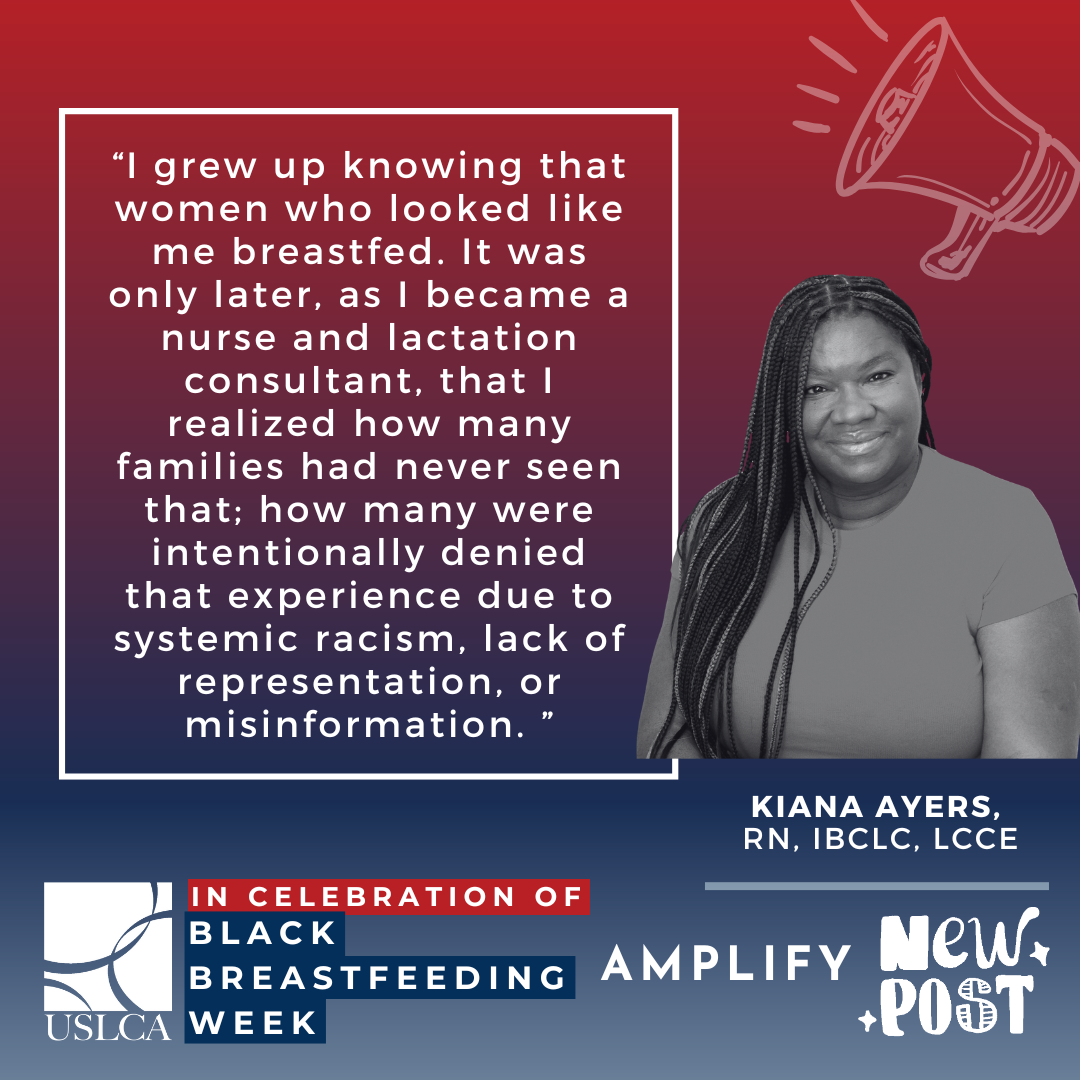By Lillian Gray Scott, M.S., CCC-SLP, IBCLC
 Some infants begin their lives in medical situations that require supplemental tube feeding to support necessary growth. These tubes can originate from the mouth or nose and travel to the stomach, or can be surgically placed just outside the stomach with an opening for nutrition to be directly placed. Infants who begin successfully breastfeeding/chestfeeding can also encounter medical complications that require the support of a feeding tube. Either situation can be traumatic and very stressful for parents. Additionally, the lactating parent must provide human milk via expression in volumes large enough to support necessary volumes through supplemental tubes. This often leads to lactating parents becoming exclusive pumpers (EP).
Some infants begin their lives in medical situations that require supplemental tube feeding to support necessary growth. These tubes can originate from the mouth or nose and travel to the stomach, or can be surgically placed just outside the stomach with an opening for nutrition to be directly placed. Infants who begin successfully breastfeeding/chestfeeding can also encounter medical complications that require the support of a feeding tube. Either situation can be traumatic and very stressful for parents. Additionally, the lactating parent must provide human milk via expression in volumes large enough to support necessary volumes through supplemental tubes. This often leads to lactating parents becoming exclusive pumpers (EP).
Weaning from a supplemental feeding tube to direct breastfeeding/chestfeeding takes an interdisciplinary team that supports the lactating parent’s goals while focusing on the medical needs of the infant. Our outpatient interdisciplinary feeding team includes pediatric nurse practitioners (PNP), registered dietitians (RD), speech-language pathologists (SLP), and an International Board Certified Lactation Consultant (IBCLC).
Our interdisciplinary feeding team uses the consensus definition of Pediatric Feeding Disorders (PFD) that includes four interwoven domains (medical, nutrition, feeding skill/dysphagia and psychosocial) for diagnosis (Goday, 2019). Not only does our team diagnose and treat PFDs, we also simultaneously assess each patient’s readiness for tube weaning, using these five pillars:
- Gastroenterological comfort: daily stool, reflux management, little to no vomiting, gagging, retching–
- Pain management: polyvagal theory (Porges, 2022; Kolacz et al., 2019), visceral hyperalgesia defined as an overactive pain responses making things such as peristalsis uncomfortable (O’Mara et al., 2018)
- Motor development: tummy time milestones, gross motor milestones
- Positive feeding experiences: skin-to-skin, supported positioning, cultural readiness/sensitivity
- Hunger: Is the infant nutritionally stable enough to provoke hunger by decreasing overall fluid/nutritional intake?
The IBCLC’s role on our interdisciplinary feeding team is to support the lactating parents’ health for optimal human milk production, provide positioning for proper latch and successful transfer of human milk and to facilitate positive feeding experiences. This role is critical to our team as it gives both the parents and team members confidence to increase direct breastfeeding/chestfeeding.
The PNP’s role is to assess and manage reflux, constipation, and pain. A common diagnosis we see is “visceral hyperalgesia” or a hypersensitive response of the gut-brain connection resulting in symptoms such as vomiting, gagging, or retching during typical digestion. Visceral hyperalgesia is more often seen in infants who have been born prematurely, have had many medical procedures, or who have had cardiac anomalies requiring repair. Our PNPs have found chronic pain medications, such as Gabapentin, to be both safe and effective in remedying symptoms related to visceral hyperalgesia (Bruce et al., 2015; O’Mara et al, 2018).
The RD assess for malnutrition and provides recommendations for caloric needs. When infants are within healthy parameters for growth, the RD may support stagnant weight gain or even weight loss to provoke hunger (Hartdroff et al. 2015; Krom et al, 2020). Additionally, our RDs offer ranges for volume intake or daily minimums with guidance on when to offer tube feedings to create hunger.
The SLP works closely with the IBCLC while addressing dysphagia, defined as difficulty moving the bolus from the source to the stomach (Logemann, 1998). The SLP works to uncover the cause of dysphagia and communicates with the appropriate disciplines to assist in its resolution. Etiologies of dysphagia often includes gut dysbiosis but may include cardiac, respiratory, neurological, or anatomical factors (Brooks, 2018). Once dysphagia is well managed or resolved the SLP and IBCLC work together to promote the lactating parent’s goals, whether that be moving to direct breast/chest feeding or using an artificial nipple or straw with expressed human milk. Though our team does not work directly with a physical therapist or occupational therapist, we do have the combined knowledge base to screen for developmental milestones and make appropriate referrals. We observed that oral feeding skills improve in correlation with gross motor skills.
Highlighting some success of our families:
- Weaning from full nasogastric tube to exclusive breastfeeding/chestfeeding in as little 34 days after spending an additional 4 weeks in the neonatal intensive care unit solely working on feeding by mouth.
- Weaning from full nasogastric tube feedings back to exclusive breastfeeding after emergent cardiac reconstructions of hypoplastic left heart syndrome
Pearls:
Babies who feel good in their bodies will accept the volume that is adequate for them to grow and thrive. Recognizing and treating troublesome gastroenterological etiologies supports an infant’s success in autonomous oral feeding.
Our interdisciplinary feeding team uses ranges of acceptable volumes with loose 24-hour goals as a guide for parents to reach tube weaning goals that also supports honoring infant cues for hunger and satiety.
Motor development and Tummy Time Milestones play a large role in feeding progression and ability of a patient to wean from a supplemental feeding tube.
Many infants with PFD also have a significant head preference from using their to try to clamp off the upper esophageal sphincter and are often diagnosed with congenital muscular torticollis (CMT) (Sargent, 2019). Improving both passive and active cervical range of motion and tummy time skills also increases their breastfeeding/chestfeeding skills.
Each infant has a different level of aversion to feeding caused by negative feeding experiences. The parents and infant are encouraged to step back to an activity related to feeding that is mutually enjoyable. Sometimes this might look like skin-to-skin or laying the infant in the latch position without being asked to latch. Positive feeding experiences also involve the adult honoring feeding refusal (with parameters offered by the interdisciplinary feeding team).
References:
Brooks, L. (2018). Treatment for dysphagia: a speech language pathologist’s perspective. In Pediatric Dysphagia (pp. 147-161). Springer, Cham.
Bruce, A. S., Davis, A. M., Baum, C. F., Chepolis, D., Kolomensky, A., Monagas, J., … & Hyman, P. (2015). Retrospective study of gabapentin for poor oral feeding in infants with congenital heart disease. Global Pediatric Health, 2, 2333794X15591565.
Goday, P. S., Huh, S. Y., Silverman, A., Lukens, C. T., Dodrill, P., Cohen, S. S., … & Phalen, J. A. (2019). Pediatric feeding disorder: consensus definition and conceptual framework. Journal of pediatric gastroenterology and nutrition, 68(1), 124.
Sargent, B., Kaplan, S. L., Coulter, C., & Baker, C. (2019). Congenital muscular torticollis: bridging the gap between research and clinical practice. Pediatrics, 144(2).
Hartdorff, C. M., Kneepkens, C. F., Stok-Akerboom, A. M., van Dijk-Lokkart, E. M., Engels, M. A., & Kindermann, A. (2015). Clinical tube weaning supported by hunger provocation in fully-tube-fed children. Journal of Pediatric Gastroenterology and Nutrition, 60(4), 538-543.
Kolacz, J., Kovacic, K. K., & Porges, S. W. (2019). Traumatic stress and the autonomic brain‐gut connection in development: Polyvagal theory as an integrative framework for psychosocial and gastrointestinal pathology. Developmental psychobiology, 61(5), 796-809.
Krom, H., de Meij, T. G., Benninga, M. A., van Dijk-Lokkart, E. M., Engels, M., Kneepkens, C. F., … & Kindermann, A. (2020). Long-term efficacy of clinical hunger provocation to wean feeding tube dependent children. Clinical Nutrition, 39(9), 2863-2871.
Logemann, J. A. (1998). Evaluation and treatment of swallowing disorders.O’Mara, K. L., Islam, S., Taylor, J. A., Solomon, D., & Weiss, M. D. (2018). Gabapentin improves oral feeding in neurologically intact infants with abdominal disorders. The Journal of Pediatric Pharmacology and Therapeutics, 23(1), 59-63.
Porges, S. W. (2022). Polyvagal theory: a science of safety. Frontiers in Integrative Neuroscience, 16.



